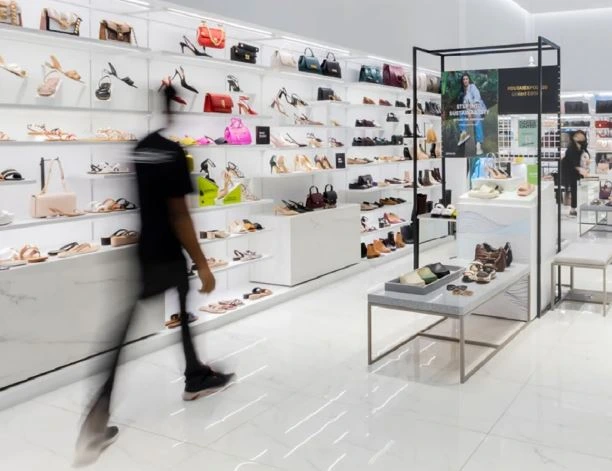
Procurement sits at the heart of retail success. It ensures that shelves are stocked, suppliers are reliable, and margins are protected. In Retail, procurement spans direct goods (the products sold), indirect goods (operational consumables) and services. Without streamlined procurement retailers are at risk of stockouts and spiralling costs, which in turn can have an impact on front of house management, resulting in unhappy customers (Brex, 2024).
This blog unpacks 3 of the most common retail procurement headaches Retail Managers face and offers practical fixes to put in place straight away.
Key Takeaways
Consider that the concept of Best Practice and that the cost of not following it is always paid in time, waste and risk.
Challenges: From port congestion and extreme weather, Brexit, sustainability issues, Plastic Packaging tax associated costs, to the more recent National Insurance hikes, EPR legislations, US tariffs and even cyber-attacks - retail supply chains have proven they can be resilient but they are vulnerable. Delays and shortages undermine sales and erode customer trust. Global procurement surveys consistently rank supply chain disruptions as the top challenge (NetSuite, 2024).
Fixes: Working closely with a single source supplier so they have a deeper understanding of your business helps them to anticipate and forecast demand more accurately, putting strategies in place so they can always fulfil supply. A single source supplier partnership can also support in maintaining a “buffer inventory” in the form of a call-off agreement which helps Retailers not only with supply but also with cashflow as well as freeing up storage space for their own products.
Whether the requirement is for direct or indirect supplies, the same purchasing strategy should be applied.
Challenges: “Maverick” or rogue spending happens when employees bypass approved suppliers or exceed budgets without oversight. This is particularly prevalent when procuring operational consumables, especially in a multiple supplier environment.
This affects a Retailer in many ways such as eroding negotiating power and driving up spend, but what of the hidden consequences and costs? This will inevitably result in an increase in financial administration to try and identify and account for the overspend. But the real reasons behind the overspending could be down to a failure of supply. So at a shop level this could mean yehaving to source local and more expensive alternatives for operational consumables for example, which in turn results in a greater administrative burden such as the processing of hundreds of petty cash receipts. For a retailer with a multiple number of outlets, this becomes a challenge that unfortunately scales.
Having complete visibility of all spend for operational consumables would eliminate this unapproved spending by getting to the source of the challenge, helping to avoid stockpiling and ending resource hungry procurement processes.
Fixes: The right supply partner with a procurement platform such as MyAcopia can transform how shop teams purchase their consumables, from till rolls to toilet rolls to tags to twinslot systems. When retailers gain a shared view of all spend, they can set workable budgets and approve all spend before orders are placed.
Instead of the hundreds of invoices and petty cash slips, they can all be replaced with just one monthly supplier invoice.
When everyday consumables can add up to 25% of a Retailer’s running costs , getting closer to understanding this spend (trends, ordering frequency, products ordered) could be hugely beneficial.
Procurify notes that many organisations fail to enforce a preferred vendor, leading to budget overruns
Challenges: Retail Managers depend on suppliers for timely delivery, quality assurance, and compliance. Failures here ripple directly to customers in terms of front of house disorganisation. Even operational consumables’ deliveries can cause disruption for shop teams in terms of late and unexpected shipments, defective goods, or poor compliance management which are all among the top procurement concerns.
“Different suppliers, different prices and different qualities of boxes” Rob O’Shea Operations Manager TLC Electrical
Working with multiple suppliers can result in receiving inconsistent products such as packaging, which in the case of TLC, led to an increase of breakages and fragmented supply to their customers. Watch their story to consistent, reliable procurement.
Fixes: Working towards creating an approved product list with one preferred supplier can mitigate the risk of inconsistent Operational Consumables products. This approach locks in quality when combined with ordering on a platform that provides complete visibility and control of spend as well.
Next steps
Procurement headaches are unavoidable in retail, but they can be managed. By addressing supply chain volatility, rogue spending and supplier issues, Retail Managers can safeguard margins and strengthen customer satisfaction. Start by auditing your current pain points and prioritising where change needs to happen first and invest in processes and supplier relationships that drive long-term resilience.
Procurement doesn’t have to be a headache, and the solutions can in fact deliver a competitive advantage when managed with the right tools and strategies. Want a demo of what bespoke procurement portals could do for your business? Just click here to let us know!